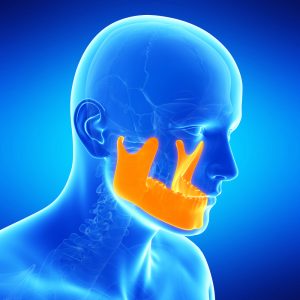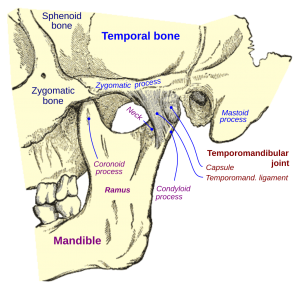What is a dual bite and how does it affect your smile? A dual bite is a dental condition where the upper and lower jaws don't align properly, leading to a combination of an overbite and an underbite.
This misalignment can cause a range of problems, from difficulty chewing and speaking to more severe issues like jaw pain and tooth wear. While it may seem like a cosmetic concern at first, understanding what a dual bite is goes beyond aesthetics and can impact your overall oral health. I
n this article, we’ll explore the causes of a dual bite, how it affects your smile, and why seeking professional help is crucial for correction.
Key Takeaways
- A dual bite means having multiple bites due to jaw joint issues.
- Causes include jaw joint hypermobility, muscle overuse, and uneven teeth.
- Dual bites can lead to TMJ, pain, and an uneven bite.
- Treatment might involve an occlusal guard or a Lucia jig.
- Symptoms include jaw popping, headaches, and difficulty chewing.
What Makes Up a Dual Bite
Understanding the framework of a dual bite involves analyzing the interplay of the condylar position bite and the tooth arrangement. In a dual bite scenario, the condylar position bite—where the condyles are fully seated—differs from where the teeth naturally meet. Simply, the lower jaw is seeking the most comfortable position. Sometimes the music stops, and the muscles decide to settle in a less-than-ideal spot, indicating a bite shift.
This shift can lead to tension in the muscles as it's not normal for the lower jaw to jump between multiple bites, but it happens. When seeking treatment, tools like the Lucia jig come into play, helping guide the jaw. Addressing this problem early can prevent TMJ issues and other discomforts. Teeth should meet harmoniously, avoiding any unnecessary drama. Seeking treatment ensures your teeth and jaw live in peace, harmonizing your smile and enhancing comfort.
Causes of Multiple Bites in Teeth
Exploring the reasons behind multiple biting positions in teeth reveals several underlying causes. Hypermobile joints can lead to instability, causing the lower jaw to move between positions. This movement can create tension, leaving muscles feeling like they've been through a tough workout. Trauma or injury sometimes nudges bones out of their happy place, leading to these shifts.
A fully seated condylar position is the ideal resting place for the jaw, but life isn't always perfect. Grinding or clenching teeth, often done unconsciously, can also contribute to multiple bites. Biting surfaces plagued with uneven dental restorations may further disrupt a harmonious dental environment.
TMJ issues can emerge as a result of these irregularities. Stress and tension in the jaw muscles are like unwanted party crashers, sneaky and persistent. Thankfully, treatment options exist to help guide teeth back to their normal positions. By addressing these concerns, you can restore comfort and stability to your dental world, ensuring the teeth meet with grace and simplicity.
Impact of Dual Bite on Oral Health
When considering the effects of a dual bite on oral wellbeing, discomfort can be a key player. Muscles may feel like they're working overtime, leading to inflammation. This can trigger discomfort or even TMJ problems. Imagine your jaw as a machine with misaligned gears—things just don't move smoothly. The repeated strain on muscles and joints isn't just a pain, it's also risky.
The fully seated condylar position is disturbed, making it hard for teeth to find their normal resting point. This misalignment can gradually affect dental structures, increasing the likelihood of future issues. Over time, wear and tear may set in, and those pearly whites could face challenges.
Seeking effective treatment is crucial. Dentists often recommend devices to guide teeth back into proper alignment. These treatments aim to bring your smile back to its best form. While not a walk in the park, restoring balance in your mouth can lead to a happier, healthier you. Tread carefully, and keep those teeth in check!
How Dual Bite Affects Your Smile
Misalignment from multiple bites can lead to noticeable changes in your smile's appearance. Imagine trying to fit puzzle pieces that don't quite match—your smile might not beam as bright. This misalignment could affect facial symmetry, making one side appear uneven.
TMJ issues might arise, causing discomfort and tension. It’s like a storm brewing in your jaw, with the potential to cloud your overall expression. The fully seated condylar position becomes a game of balancing act, trying to find its place again.
When seeking treatment, options vary. Dentists might suggest interventions to guide the bite into a more harmonious position. This process, while not instant, aims to restore balance and bring back your confident grin.
Imagine this as a journey to rediscover your smile’s true potential. Embrace the changes, and let your smile tell its unique, untold stories. A radiant smile is just around the corner, waiting to shine again.
Recognizing Symptoms and Signs
Spotting the symptoms and signs of a dual bite can be challenging. You might notice odd sounds like popping or clicking when opening your mouth wide. Perhaps chewing feels a tad tricky, as if you're dealing with an uneven playing field. Headaches could knock on your door uninvited, making their presence known in a not-so-friendly manner.
Ever felt a tight knot of tension in your jaw muscles? These can be telltale signs of something amiss. Shifting between bite positions, especially during activities like munching on your favorite snacks or giving a speech, might bring discomfort. It’s like your jaw is playing a game of musical chairs, trying to find the right seat!
Observant individuals may even detect a slight misalignment when gazing at their reflection. It's like your smile wants to share a secret, hinting at underlying issues. Recognizing these signs early can lead to a smoother path to resolution. Don’t let these signs sneak past your radar!
Options for Dual Bite Treatment
There are numerous options that can be navigated for dual bite. A potential solution often includes using an occlusal orthotic. This handy device assists in balancing your bite by aligning the jaw joint.
Sometimes, bite equilibration becomes essential to adjust the dental arches. This process ensures harmony and reduces strain. On more intricate cases, orthodontic treatments can gradually correct alignment, ensuring everything fits snugly.
Moreover, physical therapy might be recommended to ease any discomfort. Stretching and strengthening exercises can relieve tension in your face and neck.
And don't underestimate the power of professional guidance. Regular check-ups with your dentist can catch potential issues before they escalate. Each adjustment, no matter how small, contributes to a healthier and more comfortable bite. So, keep communication open with your dental team to ensure the best care.
Seeking Professional Help for Dual Bite
Seeking expertise in dual bite matters is a step worth taking for relief. Dual bite orthodontics offers specialized solutions that can make a real difference. Professional dental guidance can be pivotal in managing these concerns efficiently. Early intervention not just prevents complications but also promotes comfort and aesthetics. A thorough evaluation by a dental specialist might involve innovative tools to analyze and understand the nuances of your condition. This detailed assessment lays the foundation for a tailored approach, aimed at realigning your bite effectively.
Regular visits ensure ongoing monitoring and adjustments, which are crucial for maintaining a comfortable and functional bite. It's often these regular tweaks that keep everything in harmony, much like tuning an instrument to get the perfect sound. Professional care can make a world of difference, turning a potential problem into a manageable situation. So, don't hesitate to reach out for that expert touch.
Remember, it's not just about fixing an issue; it's about enhancing your smile and boosting confidence. So, with the right help, you're just a step away from a healthier, more aligned oral function.
Find Relief and Restore Your Smile at Raleigh Facial Pain Center
Understanding what a dual bite is and how it affects your smile is the first step in addressing this dental concern. A dual bite can cause more than just cosmetic issues—it can lead to chronic pain, jaw discomfort, and difficulty eating or speaking. At Raleigh Facial Pain Center, we specialize in diagnosing and treating dual bite problems, as well as a range of other jaw-related issues such as chewing pain, jaw pain, and restricted opening.
Our dedicated and compassionate team is here to guide you through every step of your journey to relief. Led by Dr. Yount, a board-certified Orofacial Pain Specialist, we work closely with you to create a personalized treatment plan that meets your unique needs. With our extensive experience in both medical and dental science, we are committed to helping you manage your chronic pain and restore the function and appearance of your smile. Don’t let a dual bite disrupt your life — schedule a consultation with us today and take the first step toward lasting relief.
FAQs
What is a dual bite, and how does it affect my oral health?
A dual bite occurs when the upper and lower teeth come together differently depending on how the jaw is positioned—such as when speaking versus chewing. This mismatch can lead to uneven wear, jaw discomfort, and difficulty in properly aligning the teeth.
What causes a dual bite to develop?
Dual bite can be caused by factors such as jaw misalignment, delayed tooth eruption, improper orthodontic treatment, or habits like thumb-sucking. Genetics and early childhood development also play a role in bite formation.
How is dual bite treatment different from other orthodontic treatments?
Dual bite treatment focuses on correcting bite discrepancies that appear in different jaw positions. It often requires advanced diagnostic tools and may involve braces, clear aligners, bite splints, or jaw therapy tailored specifically to address shifting bite patterns.
Can dual bite be corrected in adults, or is it only treatable in children?
Yes, dual bite can be corrected at any age. While early intervention in children is ideal, adults can still benefit from orthodontic treatments designed to realign the bite and improve jaw function. The treatment plan is customized based on age, severity, and dental history.



